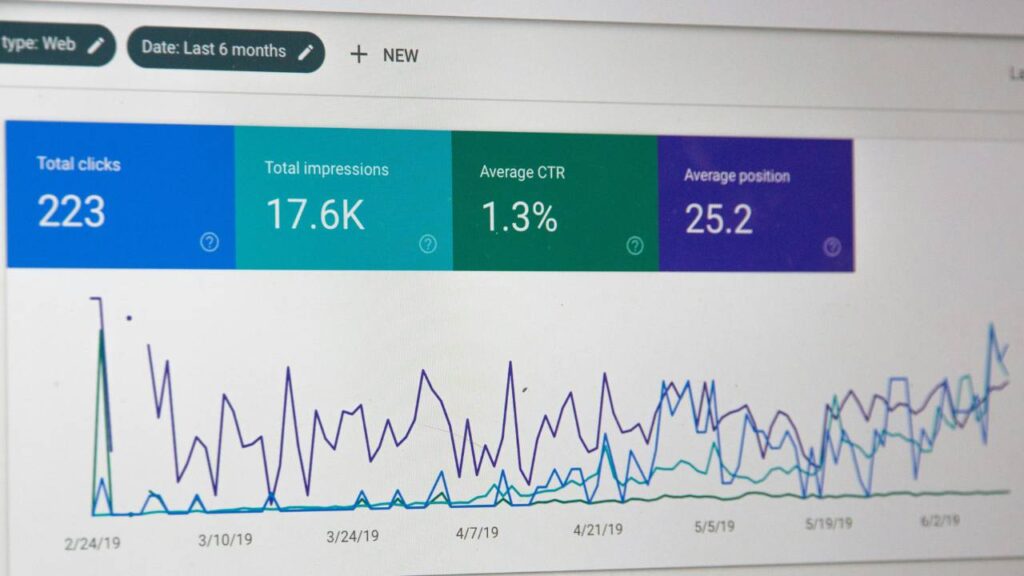
In the rapidly unfolding digital era, staying abreast of emerging technologies is not just an option for businesses, but a necessity. The landscape is evolving at an unprecedented pace, and keeping up can seem daunting. However, it’s important for the sustainability and growth of your business that you acquaint yourself with these advancements. By understanding and integrating new technologies, you can make your operations more efficient, enhance customer experiences, and ultimately secure a competitive edge.
As you navigate through the myriad of technological innovations, it’s essential to identify which ones resonate most with your business goals. This involves a careful assessment of how these technologies can streamline your processes, improve decision-making, and open up new opportunities. Whether it’s adopting artificial intelligence (AI) to better understand customer behaviour or utilising blockchain for enhanced security, the right technology can propel your business forward as you navigate the business landscape.
The adaptability of your business in this digital age hinges on your willingness to embrace change and learn continuously. Investing time and resources into understanding emerging technologies might seem overwhelming, but it’s a strategic step towards ensuring your business thrives. A proactive approach can demystify the complexities of the tech world, allowing you to make informed decisions that align with the vision and values of your business.
Identifying Technology Trends and Opportunities
Keeping your business ahead requires recognising trends in technology that align with your strategic goals and finding opportunities that may give you a competitive advantage. It’s important to understand where technology trends can potentially lead and how they might be harnessed to improve your operations or product offerings.
Evaluating Emerging Technologies
When considering new technologies, assess the relevance to your business and the potential impact on your market. Look at product cycles and adoption rates to gauge how quickly a technology is being embraced. For example, 5G technology is becoming more prevalent, facilitating faster communication and enabling the Internet of Things (IoT) to thrive. Staying informed on industry news will allow you to see how innovators are applying these technologies.
Review case studies and whitepapers by pioneers in your industry to understand practical applications of emerging technologies. Artificial Intelligence (AI) and Machine Learning (ML) are frequently highlighted for their ability to solve complex problems and automate tasks, enhancing efficiency. Opportunities lie in integrating such technologies to streamline your operations.
Embracing Continuous Learning
Adapting to technology trends means you’re constantly learning. Engage with online courses, workshops, and webinars that specialise in technological education in your field. Blockchain is no longer just about cryptocurrencies; its implications for secure, decentralised record-keeping are vast. By understanding such nuances, you can better decide when and where to invest in training or technology adoption.
Participate in industry networking groups and forums where you can discuss with peers and thought leaders. You’ll gain insights into how other businesses are leveraging technology and the pitfalls they may have encountered. Continuous learning enables you to make informed decisions when considering new technologies for your business. Keep abreast of patent filings and research publications; they can be rich sources of information on what might be the next big trend or opportunity.
Implementing and Managing New Technologies

Adapting your business to embrace emerging technologies is crucial in maintaining a competitive edge. Smart integration and vigilant management are key aspects that will dictate your success in implementing and managing these new technologies.
Integration of Emerging Technologies in Workflows
To seamlessly integrate new technologies into your existing workflows, you need to evaluate your business processes thoroughly. This means mapping out your operations and identifying areas that can be optimised with technology such as AI, IoT, or blockchain. For example, if your goal is to enhance your marketing campaigns, a company like Hedgehogs vs Foxes Dublin could leverage these technologies to create impactful promotional videos that resonate with your target audience.
Effective Use of Data and Analytics
Your business possesses a significant amount of data, which, when analysed correctly, can uncover invaluable insights. Ensure that the data analytics tools you implement can interpret this data to inform strategic decisions. For instance, you could use data analytics to refine your value proposition by identifying the unique needs and preferences of your customers.
Promoting Your Unique Value Proposition
By effectively utilising emerging technologies, you can highlight and reinforce your unique value proposition (UVP). Whether it’s through advanced customisation, faster service delivery, or superior product quality, your UVP should be evident in every technology-driven initiative you undertake. New technologies can help tailor your offerings to meet specific customer demands, setting you apart in the marketplace.
Ensuring Cybersecurity Measures
When adopting new technologies, it is imperative to prioritise cybersecurity. As you incorporate data analytics into your operations, you must also implement robust security protocols to protect both your business’s and customers’ data. Regularly update your cybersecurity measures to guard against evolving threats and ensure that your team is trained to recognise and respond to potential security breaches.
Strategy for Tech Adoption

When considering the integration of emerging technologies into your business, it’s vital to carefully construct a tailor-made strategy that encompasses budgeting, risk management, and a thorough understanding of how these technologies align with your overall business goals.
Developing a Business Strategy
Your business strategy should be the cornerstone when adopting new technologies. It ought to reflect your core objectives and how additions such as Internet of Things (IoT) devices could enhance your operation’s efficiency. For instance, if your aim is to improve product development, investing in R&D for blockchain might streamline your supply chain. Incorporate A/B testing to fine-tune how these technologies best serve your particular needs.
Resource Allocation and Budgeting
Allocating resources and setting a budget demands judicious planning. Start by determining the cost prerequisites for your chosen technology—be it blockchain or IoT. Subsequently, juxtapose this against your available funds, ensuring you allocate money to areas with the highest expected return on investment. If a technology enhances customer interaction or enables better data analysis, for example, it warrants a heavier investment.
Risk Assessment and Mitigation
Assessing and mitigating risks is integral. You must identify potential challenges—technical, operational, or security-related—that could arise from new technologies. Once identified, devise plans to prevent such risks. For blockchain, consider the implications of data security laws. For IoT devices, contemplate their integration with existing systems. By evaluating these aspects, you can formulate a robust plan to mitigate the dangers they may pose.
Driving Innovation Within the Organisation
In today’s fast-paced business environment, you play a crucial role in harnessing innovation within your organisation. By nurturing a forward-thinking culture and enhancing team synergy, you’re set to propel your organisation forward.
Cultivating an Innovative Culture
To foster an environment where innovation thrives, you should initiate an agile approach to project management. By doing so, your team can rapidly respond to changing markets and customer needs. Encourage your team members to take risks and experiment, understanding that not every venture will succeed, but each is a valuable learning opportunity. Recognise and reward creative thinking and problem-solving to further embed this ethos.
Leveraging Collaboration and Communication
Effective collaboration and communication are the bedrock of innovation. You ought to facilitate regular knowledge-sharing sessions where your team can discuss new ideas without fear of judgement. Establish cross-departmental teams to break down silos and integrate diverse perspectives, which can lead to more comprehensive and creative solutions. Utilise digital tools to ensure your communication strategies are inclusive and that everyone, regardless of their role or location, has a voice in the innovation process.
Measuring Impact and Achieving Growth

Incorporating emerging technologies into your business strategy is a move towards efficiency and growth. To fully realise these benefits, you need to measure the right indicators and foster an environment poised for expansion.
Tracking Productivity and Efficiency
To ascertain how well your technology investments translate to productivity, it’s crucial to compare performance data pre- and post-implementation. Create a table with key performance indicators (KPIs) related to task completion rates, the time taken for various processes, and resource allocation before and after adopting new technologies.
For example:
| KPI | Pre-Tech Implementation | Post-Tech Implementation | % Change |
| Task Completion Rate | 70% | 85% | +21% |
| Avg. Process Time (Days) | 5 | 3 | -40% |
| Resource Allocation (Man-Hours) | 120 | 80 | -33% |
Focus on areas with the most significant impact, and ensure your team understands how their day-to-day operations become more efficient. This allows you to accelerate growth in your business through enhanced productivity.
Expanding Customer Base and Experience
Growth is inextricably linked to your customers. Utilise technology to improve customer interactions and streamline sales processes to draw in new clients. Chart changes in your customer base over time through a line graph depicting growth in customer numbers since technology integration.
Next, assess customer experience (CX) with feedback surveys measuring satisfaction before and after deploying new technologies. Tabulate responses on service speed, ease of access, and overall satisfaction, translating customer sentiment into quantifiable data.
For example:
| Customer Experience Aspect | Average Rating Pre-Tech | Average Rating Post-Tech |
| Service Speed | 3.5/5 | 4.2/5 |
| Ease of Access | 3.0/5 | 4.5/5 |
| Overall Satisfaction | 3.7/5 | 4.3/5 |
Your CX improvements are a testament to the value added through ongoing technological advancements.
